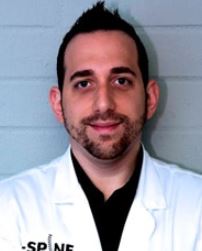“Knee pain?”
Female | 50 years old
Complaint duration: One week
Medications: Topical for skin
Conditions: N/a
9 Answers
However, as you stated that your experiencing a sharp knee pain upon weight-bearing activities, such as walking, climbing, and descending stairs, paint a picture of a possible osteoarthritic situation of the knee.
However, when you say that your knee hurts when you’re laying down, that means you’re not in the weight-bearing position anymore which would lead me to believe that it is not due to constant, persistent compressive forces that is causing your knee pain.
When you are in the non-weightbearing position, such as such as when your are lying down or sitting and you are still experiencing knee pain, that could be due to an inflammatory condition and/or also due to a structural abnormality that is causing your knee pain.
Specifically at the front of the knee, there’s a condition that is termed, patellar tendinitis. That is due to the inflammation of the patellar tendon as it attaches with the quadricep muscle. Many of my patients have experienced patellar tendinitis, even when they’re laying down or sitting as in a non-weightbearing position.
Also, you said that applying ice does not help relieve your suffering. In the medical, osteopathic, and chiropractic community, we often treat these inflammatory conditions by strictly adhering to the pneumonic KISS..
By keeping the treatment protocols simple, and efficient efficient, the route, my experience, patients are more likely to be more proactive in their recovery.
There is a pneumonic in the healthcare community termed R.I.CE. which is often very effective in relieving this type of knee pain. The capital R stands for Rest meaning that you should stay off the injured knee whether you’re lying in a prone or supine position, basically in a non-weight-bearing environment. The I stands for ice in which you’ve already attempted to apply to relieve your pain. The capital C stands for compression, so what I would advise our patients is to go to target, Rite Aid, or Walmart and buy a ace bandage and as they’re laying down, firmly wrap the ice pack on top of the injured portion of the knee and with the ace bandage, so it actually applies compressive force on the injured area. But it is also important not to wrap it so tightly as to cut off the circulation. By doing so you could shorten the healing time in a more desirable manner.
And finally the E stands for elevation. What does that mean? That basically means that you’re laying down either on your bed or on your couch place four or five pillows underneath your leg or ankle, so that the leg is higher than the level of your heart. This will allow free flowing drainage of the inflammatory fluid away from the injured area, back to the organs that are involved metabolizing and excretion of the inflammatory fluids thus reducing the inflammation, swelling, and subsequently the pain.
This simple method has been very effective clinically throughout the years that I’ve been practicing and has relieved many of my patients non-organic cause of pain.
Another very important clinical pearl to understand about a non-organic cause of knee pain is to go to the inner part of the knee and feel for the vastus medialis muscle, which is the primary stabilizing muscle of the knee. When I am practicing with a younger clinician, I often try to teach them to keep things as simple as possible. There’s no need to look for all the uncommon causes of knee pain when I have seen through the years of clinical practice that a chronically hypertonic, myospasm Tomorrow of the vastus medialis muscle is one of the most common causes of non-organic knee pain.
The simple but very effective treatment remedies would be to perform an active release technique on the muscle belly, followed by myofascial release technique on the musculotendinous portion of the muscle, and finally followed by trigger point therapy on all the spasms throughout the entire muscle. Naturally any subluxations of the knee needs to be properly corrected via Chiropractic or osteopathic manipulations.
By applying these simple, noninvasive techniques, one can avoid taking pain medication’s, and more importantly, surgical intervention.
Another important aspect is nutrition, there is a supplement that is termed chondroitin sulfate or also known as glucoseaminoglycans (GAG’s) which is typically produced from a derivative of shark cartilage, and has been documented to provide partial regeneration to the main cartilages of the knee.
Also it is important to maintain within your normal body mass index (BMI) as chronic obesity will subsequently result in weight-bearing joint pain either at the hips, at the knees and/or at the ankles due to the constant compressive forces being applied to those areas.
I hope that I have answered your question and have provide practical methodologies for you to explorer in your journey to relieve your suffering.
With that being said, please take great care of yourself, pay close attention to your body as the old-saying goes,”It will tell you everything that you’ll ever need to know., and it will never lie to you and lead you down a path astray.
Our body is a temple, and when it is treated as such, one can indeed venture down a path of true health, wellness, and well-being
Yours in health,
Dr. Charles Nguyen
Get cold pressed, hexane free castor oil and make a Pack out of it. wear it for overnight. Then, before running again, make sure you work on Muscle strength and mobility in the Foot, ankle, Thigh and hip.
knees are dehydrated and you damaged them further with use causing the
severe symptoms. I use Applied kinesiology to analyze these conditions.








